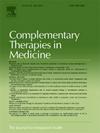Effectiveness and safety of light therapy for treating primary dysmenorrhea: A systematic review and meta-analysis of randomized controlled trials
IF 3.5
3区 医学
Q1 INTEGRATIVE & COMPLEMENTARY MEDICINE
引用次数: 0
Abstract
Objective
Primary dysmenorrhea, defined as painful menstrual cramps without identifiable pelvic pathology, is a prevalent gynecological condition that significantly impacts quality of life. Emerging evidence suggests that light-based therapies, including low-level light therapy (LLLT) and high-intensity light therapy (HILT), may offer a non-pharmacological approach to managing menstrual pain. This systematic review aimed to assess the effectiveness and safety of light therapy in individuals with primary dysmenorrhea.
Methods
For this systematic review and meta-analysis, we searched twelve electronic databases, including PubMed, Cochrane Library, Embase, Allied and Complementary Medicine Database (AMED), APA PsycINFO, CINAHL Complete, Web of Science, China National Knowledge Infrastructure (CNKI), Chinese Scientific Journals Database (VIP), WanFang Data, Research Information Sharing Service (RISS), and Oriental Medicine Advanced Searching Integrated System (OASIS) to identify randomized controlled trials (RCTs) evaluating the effectiveness of light therapy for primary dysmenorrhea. The search was conducted up to February 4, 2025. Two reviewers independently assessed articles for eligibility and extracted data. Disagreements were resolved through discussion. Critical outcomes were pain scales such as the Visual Analog Scale (VAS) or Numeric Rating Scale (NRS). Risk of bias was assessed using the Cochrane Risk of Bias Tool (RoB 2), and meta-analyses were conducted using RevMan software. The study protocol was registered in PROSPERO (CRD420250655437). Available from https://www.crd.york.ac.uk/PROSPERO/view/CRD420250655437.
Setting
Twelve studies involving 645 participants met the inclusion criteria, highlighting the potential therapeutic role of light therapy.
Results
Interventions primarily involved LLLT (n = 6), with some using HILT (n = 2) or polarized light (n = 1). Meta-analysis of three RCTs showed a statistically significant reduction in pain after 12 weeks of LLLT compared to sham treatment (n = 150, mean difference (MD) = -4.02, 95 % confidence interval (CI): −7.21 to −0.82; p = 0.01). Similarly, LLLT also demonstrated greater pain reduction compared to oral contraceptives after 12 weeks (n = 156, MD = 0.91, 95 % CI: 0.49–1.33, p < 0.0001). Most studies were assessed as having some concerns regarding risk of bias. Reported adverse effects were minor and transient, with no serious adverse events noted.
Conclusion
Light therapy, particularly LLLT, may represent a safe and effective non-pharmacological intervention for the management of primary dysmenorrhea. Despite promising results, variations in treatment protocols contributed to heterogeneity and hindered identification of optimal parameters. Limited trial numbers and regional concentration also reduce generalizability. Further high-quality, large-scale RCTs with standardized treatment protocols are needed to confirm clinical efficacy and define optimal therapeutic parameters.
光疗法治疗原发性痛经的有效性和安全性:随机对照试验的系统回顾和荟萃分析
原发性痛经是一种常见的妇科疾病,严重影响患者的生活质量。新出现的证据表明,基于光的疗法,包括低强度光疗法(LLLT)和高强度光疗法(HILT),可能提供一种非药物方法来治疗月经疼痛。本系统综述旨在评估光治疗原发性痛经患者的有效性和安全性。方法检索PubMed、Cochrane Library、Embase、Allied and Complementary Medicine Database (AMED)、APA PsycINFO、CINAHL Complete、Web of Science、中国知网(CNKI)、中国科学期刊库(VIP)、万方数据、研究信息共享服务(RISS)、中国科学文献网(CNKI)、中国科学文献网(CNKI)等12个电子数据库进行系统评价和meta分析。和东方医学高级搜索集成系统(OASIS),以确定随机对照试验(rct)评估光疗治疗原发性痛经的有效性。搜寻工作一直持续到2025年2月4日。两名审稿人独立评估文章的合格性并提取数据。分歧通过讨论得到解决。关键结果是疼痛量表,如视觉模拟量表(VAS)或数字评定量表(NRS)。使用Cochrane风险偏倚工具(RoB 2)评估偏倚风险,使用RevMan软件进行meta分析。研究方案已在PROSPERO中注册(CRD420250655437)。可从https://www.crd.york.ac.uk/PROSPERO/view/CRD420250655437.SettingTwelve获得,涉及645名参与者的研究符合纳入标准,突出了光疗的潜在治疗作用。结果干预以LLLT为主(n = 6),部分采用HILT (n = 2)或偏振光(n = 1)。三个随机对照试验的荟萃分析显示,与假治疗相比,LLLT治疗12周后疼痛的减轻具有统计学意义(n = 150,平均差异(MD) = -4.02,95 %置信区间(CI):−7.21至−0.82; = 0.01页)。同样,12周后,与口服避孕药相比,LLLT也显示出更大的疼痛减轻(n = 156,MD = 0.91, 95 % CI: 0.49-1.33, p <; 0.0001)。大多数研究被评估为存在一定的偏倚风险。报告的不良反应是轻微和短暂的,没有严重的不良事件。结论光照疗法,尤其是低光照疗法,可能是一种安全有效的治疗原发性痛经的非药物干预手段。尽管结果令人鼓舞,但治疗方案的差异导致了异质性,阻碍了最佳参数的确定。有限的试验数量和区域集中也降低了普遍性。需要进一步的高质量、大规模的随机对照试验和标准化的治疗方案来确认临床疗效和确定最佳治疗参数。
本文章由计算机程序翻译,如有差异,请以英文原文为准。
求助全文
约1分钟内获得全文
求助全文
来源期刊

Complementary therapies in medicine
医学-全科医学与补充医学
CiteScore
8.60
自引率
2.80%
发文量
101
审稿时长
112 days
期刊介绍:
Complementary Therapies in Medicine is an international, peer-reviewed journal that has considerable appeal to anyone who seeks objective and critical information on complementary therapies or who wishes to deepen their understanding of these approaches. It will be of particular interest to healthcare practitioners including family practitioners, complementary therapists, nurses, and physiotherapists; to academics including social scientists and CAM researchers; to healthcare managers; and to patients. Complementary Therapies in Medicine aims to publish valid, relevant and rigorous research and serious discussion articles with the main purpose of improving healthcare.
 求助内容:
求助内容: 应助结果提醒方式:
应助结果提醒方式:


